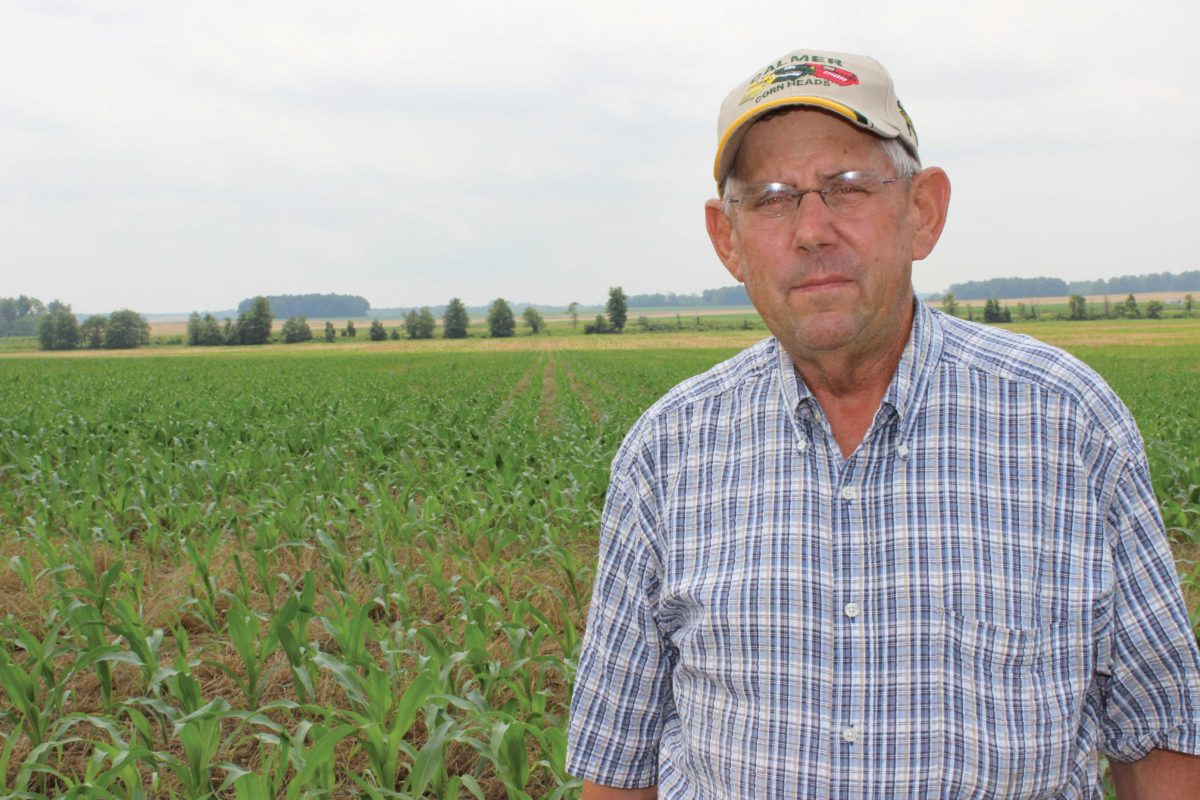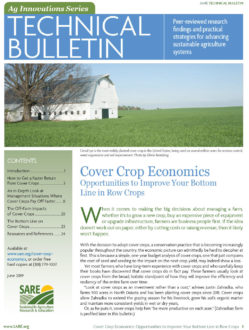
Ralph "Junior" Upton, Springerton, Ill.
Primary cover crops: cereal rye, ryegrass and hairy vetch
Junior Upton’s history with cover crops began almost 50 years ago with frost-seeded red clover into winter wheat. Producing corn and soybeans on 1,800 acres about 100 miles east of St. Louis, Mo., Upton recalls that his original interest in cover crops and no-till arose from a desire to limit soil erosion. Although he has never lost sight of this benefit, his many years of planting cover crops and seeing the enormous positive impact they have on the resilience of his soil has expanded his appreciation of them. Cover crops have literally improved his ability to weather storms, he says.
Upton has experimented with multiple cover crop species, including buckwheat, radishes, rapeseed, cereal rye, vetches and ryegrass. He explains that trial and error along with in-field research through partnerships with programs such as SARE have enabled him to pinpoint cover crop mixtures that work with his management system. Upton no-till drills a three-way mix of cereal rye, ryegrass and hairy vetch after both corn and soybeans. He has a specific reason for each cover crops he relies upon. Cereal rye helps with weed control and soil erosion, and is a great companion crop for the other cover crops. The root system of ryegrass helps to break up the fragipan in his soil and also assists with weed control. When managed properly, hairy vetch generates both supplemental nitrogen and additional weed control.
Upton recalls introducing ryegrass into his system and seeing roots 48 inches deep, growing through the fragipan, even though above-ground biomass was less than five inches tall. Being vulnerable to droughts was an ongoing concern in the past, but now cover crops have helped to alleviate some of that worry by improving both the water-holding capacity of his soil and the rooting depth of his corn and soybeans. “Dry weather killed me in the past due to a fragipan,” Upton explains. “I had been farming the top five inches of soil, where now I use four feet of soil.”
When discussing his conservation practices, Upton quickly points to his focus on the bottom line and how his farm management has changed over the years. Switching to no-till and cover crops in the mid-90s decreased his capital outlay for equipment and lessened his fuel bill. Now, after years of experience, Upton has tweaked his management again. By using different seed maturity groups and slightly later planting dates, he has been able to reap additional soil health benefits, reduce fertilizer inputs and get better weed control. He has also seen improved profit, in part due to better yields where he has used cover crops. Upton recommends that producers take the time to evaluate their own situation, soils and management priorities. “What works for me may not work out as well on someone else’s farm,” he says.
The bottom line for Upton is that every acre on his farm is destined to have a cover crop. He looks forward to additional breeding work with cover crops and hopes to take advantage of additional benefits in the future, such as increased nitrogen availability.
